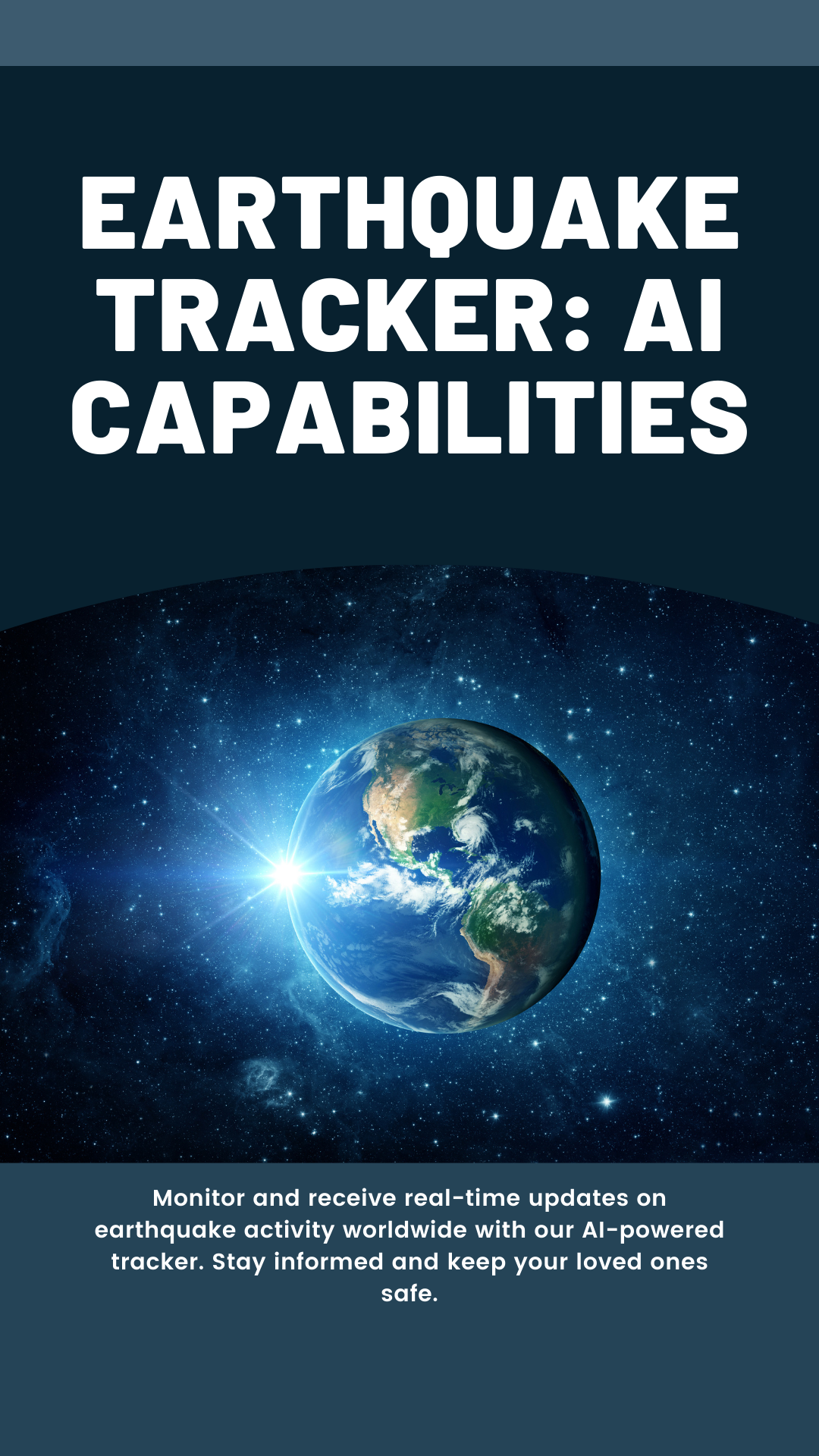Demystifying Earthquakes
 Cheelo Hamududu
Cheelo HamududuTable of contents

Introduction
Earthquakes are a powerful force of nature, and understanding them can help us be prepared. This article introduces a Python application that tracks real-time earthquake data and offers some basic forecasts for future seismic activity.
Unveiling the App
This application boasts several impressive features:
Live From the Source: It pulls in real-time earthquake data directly from the US Geological Survey (USGS), ensuring you have the latest information.
Learning from the Past: The app keeps track of historical earthquake patterns, potentially helping identify areas with higher seismic activity.
A Glimpse into the Future (Maybe): While not a crystal ball, the app uses a simple linear regression model based on past trends to offer basic predictions for future earthquake activity. Important Note: This is for informational purposes only and should not be solely relied upon for earthquake preparedness.
Data on Demand: The application provides REST API endpoints for developers to access earthquake data and predictions programmatically.
Always Up-to-Date: The app automatically updates earthquake data every hour, keeping you informed.
The future of earthquake monitoring and prediction with Python
Python's versatility and powerful libraries make it an ideal tool for earthquake monitoring and prediction. As machine learning and AI continue to advance, we can expect more sophisticated models capable of providing more accurate and timely forecasts. By leveraging Python's capabilities, we can gain a deeper understanding of earthquakes and develop tools that can help mitigate their impact.
This Python application offers a fascinating glimpse into the world of earthquake tracking and prediction. While its predictions are for informational purposes only, the real-time data and historical analysis features make it a valuable tool for anyone interested in understanding earthquakes better.
Online resources and Python documentation for further learning
Importance of monitoring and predicting earthquakes
Earthquake monitoring and prediction are crucial for several reasons:
1. Saving Lives
Early Warning Systems: By detecting seismic activity early, scientists can issue timely warnings to populations in affected areas. This allows people to evacuate safely, take shelter, and minimize casualties.
Emergency Response: Accurate information about the location, magnitude, and potential impact of an earthquake helps emergency responders allocate resources effectively and prioritize rescue efforts.
2. Protecting Infrastructure
Infrastructure Design and Construction: Understanding seismic activity in a region helps engineers design and build structures that can withstand earthquakes. This reduces damage to buildings, bridges, and other critical infrastructure.
Damage Assessment: Real-time monitoring can help assess the extent of damage to infrastructure, allowing for rapid response and repair efforts.
3. Scientific Research
Understanding Earth's Dynamics: By studying earthquake patterns, scientists gain insights into the Earth's tectonic processes, volcanic activity, and other geological phenomena.
Improving Prediction Models: Analyzing historical data and real-time observations helps refine prediction models, leading to more accurate forecasts.
4. Economic Impact
Insurance Industry: Accurate earthquake risk assessments help insurance companies set appropriate premiums and develop effective risk management strategies.
Economic Recovery: Timely and accurate information about the extent of damage can help governments and businesses plan for recovery efforts, minimizing economic disruption.
While scientists have made significant progress in earthquake monitoring and prediction, it's important to note that accurate prediction of the exact time, location, and magnitude of a specific earthquake remains a challenging task. However, continuous research and technological advancements are bringing us closer to this goal.
Subscribe to my newsletter
Read articles from Cheelo Hamududu directly inside your inbox. Subscribe to the newsletter, and don't miss out.
Written by
